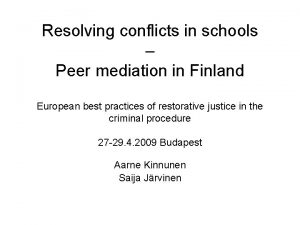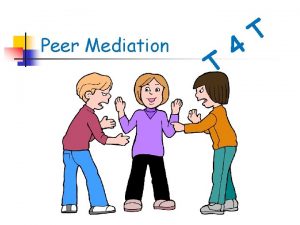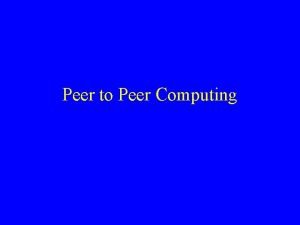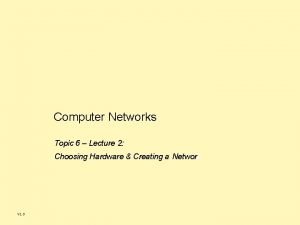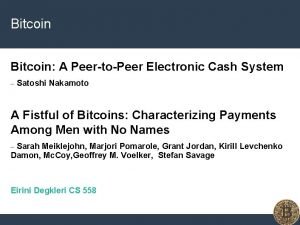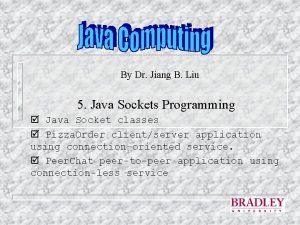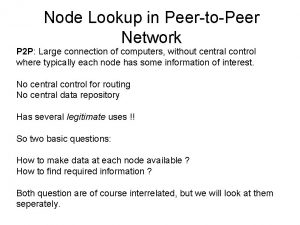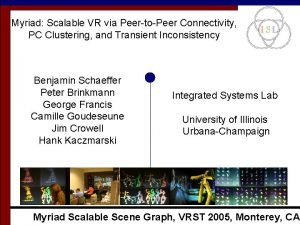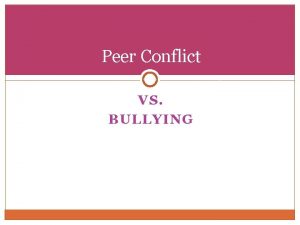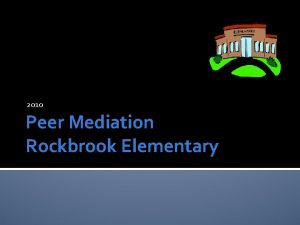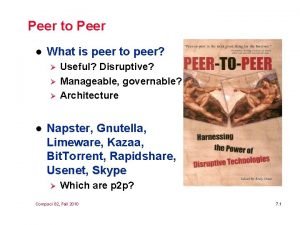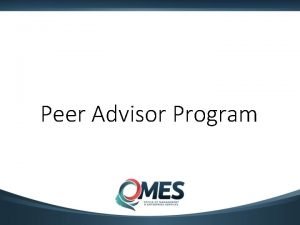Peer Mediation T 4 T Conflict is an
















- Slides: 16

Peer Mediation T 4 T

Conflict is an inescapable and essential part of life, diversity and change. Successful conflict resolution is essentially a problem-solving exercise, which involves achieving win-win situations rather that the win-lose outcome that competition and fighting tends to achieve.

What is Mediation? A structured process in which a neutral third party assists voluntary participants in resolving their conflicts. Stacey & Robinson, 1997, Let’s Mediate.

Mediation is In peer mediation, students talk face to face in a safe and supportive discussion led by trained peer mediators. The process is organized, structured, and systematic and aimed at producing positive actions and outcomes. Peer Mediation does not take the place of normal consequences when inappropriate behavior has occurred.

Mediation is NOT: n n About deciding who’s ‘wrong’ or ‘right’ About apportioning blame About focusing on the past any more than is necessary to help pupils work out a way forward About offering advice. Mediators support pupils to work out a way forward which is mutually acceptable

“If you want to make peace, you don't talk to your friends. You talk to your enemies. ” Mother Teresa

What situation can be mediated? §Arguments §Conflict with peers §Teasing §Verbal exchanges §Harassment §Misunderstandings §Name-calling §Horseplay §Rumours

Which situations should not be mediated? § Issues that involve sensitive information § Issues that involve the police § When the dispute involves an adult § When one or both parties have a history with bullying or violence § Racist Issues

Mediation helps pupils to n n n n Define the problem from their point of view Identify and express their feelings and needs Hear the feelings and needs of the other person Acknowledge each person’s viewpoint Create solutions Agree a course of action Evaluate progress

What are the benefits of Peer Mediation for the school? 1. Peer Mediation promotes a positive classroom environment and school culture. 2. Peer Mediation assists disputants and mediators to learn more effective conflict resolution strategies for future situations. 3. Peer Mediation eases time pressure on staff by allowing some issues to be resolved by Mediators.

What are the benefits of Peer Mediation for the school? 4. Gives teachers time to teach, and students time to learn. 5. Can reduce violence, vandalism, and absenteeism as well as suspensions or punitive actions

Peer Mediators can also § Help train other peer mediators § Help with Assemblies § Help in promoting the peer mediation programme

How does it work? n n n For peer mediation to work effectively, at least one party involved in the conflict must be willing to make contact with the peer mediation facilitator Parties may be referred by outside person After process is explained, both parties must agree to take part

Training peer mediators n Training in interpersonal relationships n n active listening skills, facilitating discussions, step by step process Collaborative style n n explore alternatives, identify issues think about consequences and how they will affect the relationship

Steps to peer mediation Referral Meet the first person Meet the second person Carry out the Peer Mediation and Work together for an agreement Follow-up

the ge Signposts to a Peer Mediation Hear the story Share feelings Seek solutions Agreement
 Peer mediation meaning
Peer mediation meaning Peer mediation definition
Peer mediation definition Peer to peer computing environment
Peer to peer computing environment Peer to peer merupakan jenis jaringan… *
Peer to peer merupakan jenis jaringan… * Peer to peer network hardware
Peer to peer network hardware Tim beamer
Tim beamer Peer to p
Peer to p Sviluppo condiviso esempi di peer to peer compilati
Sviluppo condiviso esempi di peer to peer compilati Peer intervention program
Peer intervention program Bitcoin: a peer-to-peer electronic cash system
Bitcoin: a peer-to-peer electronic cash system Peer to peer transactional replication
Peer to peer transactional replication Peer to peer chat application in java
Peer to peer chat application in java Node lookup in peer to peer network
Node lookup in peer to peer network Relazione finale docente tutor compilata
Relazione finale docente tutor compilata Peer-to-peer o que é
Peer-to-peer o que é Annotazioni sulla verifica effettuata peer to peer
Annotazioni sulla verifica effettuata peer to peer Features of peer to peer network and client server network
Features of peer to peer network and client server network
